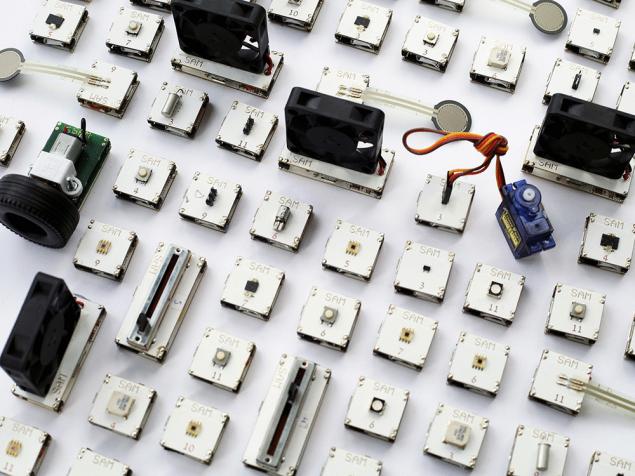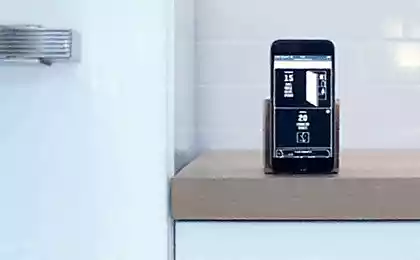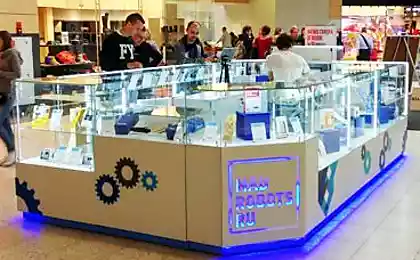484
Application SAM — a tool to educate children and develop skills in engineering

Parents who want to teach their children programming, there are lots of possibilities from the simplest of programming tools to full classroom study, but a new system called SAM offers another interesting solution.
SAM is a series of sensors and actuators the size of a postage stamp, which combine hardware and software and promise access to the "Internet of things" without having to know the circuitry, or have experience in programming.
The SAM modules are Autonomous and do not require soldering, is equipped with its own power source and wireless radio which can communicate with the base personal computer at a distance up to 45 meters. Program for them to use the interface drag-and-drop, and every little element is just a square inch square and a quarter inch thick can be unobtrusive addition to almost any project.
The current composition of modules includes eight input elements, including buttons and levers, motion sensors, light and temperature; as well as five outputs, including motors and light bulbs. Despite the limited palette of options, in combination, users can create very interesting products. 8-year-old boy built the machine, can bend around obstacles using the proximity sensor and few motors.
"It was very cool, and I even wondered why I was getting a degree in engineering" — said the Creator of SAM Joachim horn.
Another student built a Twerk-Bot, after watching the Miley Cyrus, which was moving to the music. Other young creators are doing a more traditional musical instruments and toys, but the common theme is to pay more attention to their creative goals, not bother with the manufacture of the elements.
"It is very important when non-techie gets their hands on electronics, and knows what it is and how to use it," says horn.
Products inspired by London Creator Joachim horn started working on the project when I was in graduate school, where he collected a multinational collective of 67 designers and innovators to hone their system through a series of workshops, hackathons and exhibitions.
"My dream always was to be part of the multidisciplinary team at the age of twenty years, who would receive more pleasure from working together than from watching a football match".
The result of this cooperation was a fresh look at electronics, which was focused on eliminating the discouraging frustrations associated with working with electronics.
"I'm a mechanical engineer, and I was always scared of the dark magic of electrical engineering, says horn. — If you are lucky and you will do everything step by step, point by point, and you descend the grace then it will work and you will feel relief".
Design DNA Horne believes that the value of SAM lies not in the technical specifications, and in the philosophy of the Assembly modules. In contrast to the same Lego Mindstorms, which is aimed at people who want to create functional, but very aggressive-looking robots, SAM is a neutral solution for creatives and designers. Capability modules allow you to throw a workbench and make a nice bedroom stuff.
SAM was created as a means of learning for children and development of their engineering skills, but in reality the system can help users of all ages learn simple and easy creation of interesting projects without having to know subtleties. SAM applications include several features: view the code for the advanced who want to go through it, and for mere mortals who just want to do something.
"Creative designers, startups and independent developers will be able to compete with large companies on the field of "smart objects". Innovation will come out of the best ideas and the best specialists, not only from those who can afford the expensive startup and squanders money."
The cost vs values of SAM — a reasonable solution, but its cost may be controversial. Given the rechargeable battery and wireless connections in every brick, you can guess that each module will cost about $ 25. Compared with LittleBits, which start from $ 9 per item, and the Raspberry Pi, which costs $ 35, or even 150 $ Nano kit, the SAM system can be very expensive.
Although the price of SAM are very expensive, each module its equivalent at least four LittleBits, and horn notes that their reuse provides even greater value. SAM modules can be implemented in different classes, ideas, projects to remove, replace and improve.
The Kickstarter project is more than overcome the necessary barrier of fees and work on 29 October with an expected launch in March 2015.
Source: hi-news.ru
Sugary drinks shorten telomeres
Chair, printed on a 3D printer capable of taking the shape of your body























